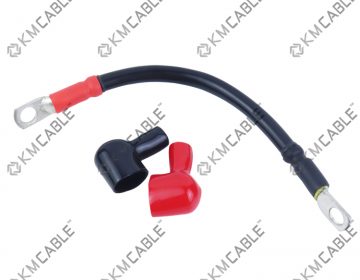
Introduction to PVC and LSZH cable
When it comes to PVC or LSZH cable for various applications, understanding the environmental implications of different materials is crucial. Two common types of cables are PVC (Polyvinyl Chloride) and LSZH cable(Low Smoke Zero Halogen). This article explores the differences between these two types of cables, focusing on their environmental impact and usage, to help you make an informed decision.
What Are PVC Cables?
Definition and Composition
PVC cables are made from Polyvinyl Chloride, a widely used plastic that contains chlorine and other additives to enhance flexibility and durability. These cables are known for their cost-effectiveness and versatility.
Common Uses of PVC Cables
PVC cables are commonly used in household wiring, industrial applications, and general electrical installations due to their robustness and affordability.
Environmental Impact of PVC Cables
- Production Process: The manufacturing of PVC involves the use of chlorine, which can release harmful dioxins into the environment.
- Decomposition: When burned, PVC cables emit toxic gases, including hydrogen chloride and dioxins, which contribute to air pollution and health hazards.
- Recycling Issues: PVC is not easily recyclable, leading to more waste in landfills.
What Are LSZH Cables?
Definition and Composition
LSZH cables are made from materials that emit low levels of smoke and no halogen when exposed to fire. These materials include polyethylene and polypropylene, which are halogen-free.
Common Uses of LSZH Cables
LSZH cables are preferred in environments where fire safety is a priority, such as in public buildings, transportation systems, and data centers.
Environmental Impact of LSZH Cables
- Production Process: The manufacturing of LSZH cables is generally less harmful to the environment as they do not contain halogens.
- Decomposition: In the event of a fire, LSZH cables produce minimal smoke and non-toxic fumes, reducing the risk of harm to humans and the environment.
- Recycling: LSZH cables are easier to recycle compared to PVC cables, making them a more sustainable choice.
Comparing PVC and LSZH Cables
Cost
- PVC Cables: Generally cheaper due to the lower cost of raw materials and simpler manufacturing process.
- LSZH Cables: More expensive because of the advanced materials and manufacturing techniques required.
Fire Safety
- PVC Cables: Emit dense smoke and toxic fumes when burned.
- LSZH Cables: Produce less smoke and non-toxic fumes, making them safer in fire scenarios.
Durability and Flexibility
- PVC Cables: Highly flexible and durable, suitable for a wide range of applications.
- LSZH Cables: Slightly less flexible but offer sufficient durability for most uses, especially where safety is paramount.
Environmental Considerations
- PVC Cables: Higher environmental impact due to toxic emissions during production and disposal.
- LSZH Cables: Lower environmental impact with safer emissions and better recyclability.
Making an Informed Decision
Assessing Your Needs
- Budget Constraints: If cost is a major concern, PVC cables might be the better option.
- Safety Requirements: For applications where fire safety is critical, LSZH cables are the preferred choice.
- Environmental Priorities: If reducing your environmental footprint is important, LSZH cables are more eco-friendly.
Application Specifics
- General Electrical Installations: PVC cables are suitable for many standard electrical applications.
- Public and High-Risk Areas: LSZH cables should be used in public buildings, transport systems, and areas where fire risk and smoke toxicity are major concerns.
Conclusion
Choosing between PVC and LSZH cables involves considering various factors including cost, safety, durability, and environmental impact. By understanding the differences, you can make a more informed decision that aligns with your needs and priorities, ultimately contributing to safer and more sustainable practices.
FAQs
What is the main difference between PVC and LSZH cables?
PVC cables contain chlorine and emit toxic fumes when burned, while LSZH cables are halogen-free and produce less smoke and non-toxic fumes.
Are LSZH cables more expensive than PVC cables?
Yes, LSZH cables generally cost more due to their advanced materials and safer fire properties.
Can PVC cables be used in all applications?
PVC cables are versatile but may not be suitable for environments where fire safety and low toxicity are critical.
Is it true that LSZH cables are better for the environment?
Yes, LSZH cables have a lower environmental impact, especially regarding emissions during fires and their recyclability.
Why do LSZH cables produce less smoke and toxic fumes?
LSZH cables are made from halogen-free materials, which do not produce harmful gases when burned.
Which type of cable should I choose for a high-rise building?
For high-rise buildings, LSZH cables are recommended due to their superior fire safety characteristics.








